Abstract
1. Exposure of depilated skin of guinea-pig to ultraviolet (u.v.) light for 20 s produces a prolonged inflammatory response.
2. The erythaema becomes evident within 15-30 min after the exposure and progressively increases in intensity reaching its maximum by 4-6 hours. The erythaema persists over 24 hours.
3. Increase in vascular permeability is biphasic with an early short-lived rise peaking at 0·5 h and a prolonged secondary response peaking at 9-12 h and lasting over 48 hours.
4. In presence of aspirin, phenylbutazone and indomethacin, administered prior to u.v. exposure, the inflammatory reaction is partially suppressed, depending upon the dose. The drugs are ineffective in aborting or minimizing the response when given after the inflammation is established. Corticosteroids fail to influence the u.v. inflammation in this test. The significance of these findings is discussed.
Full text
PDF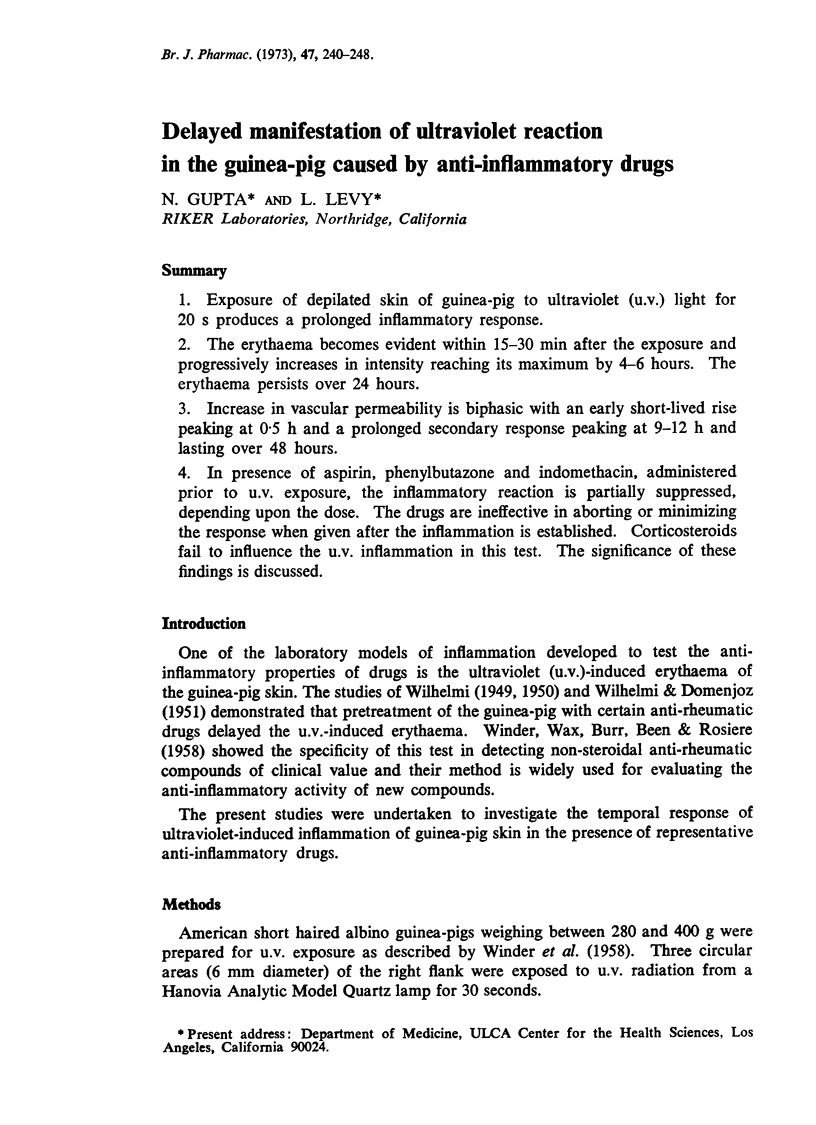



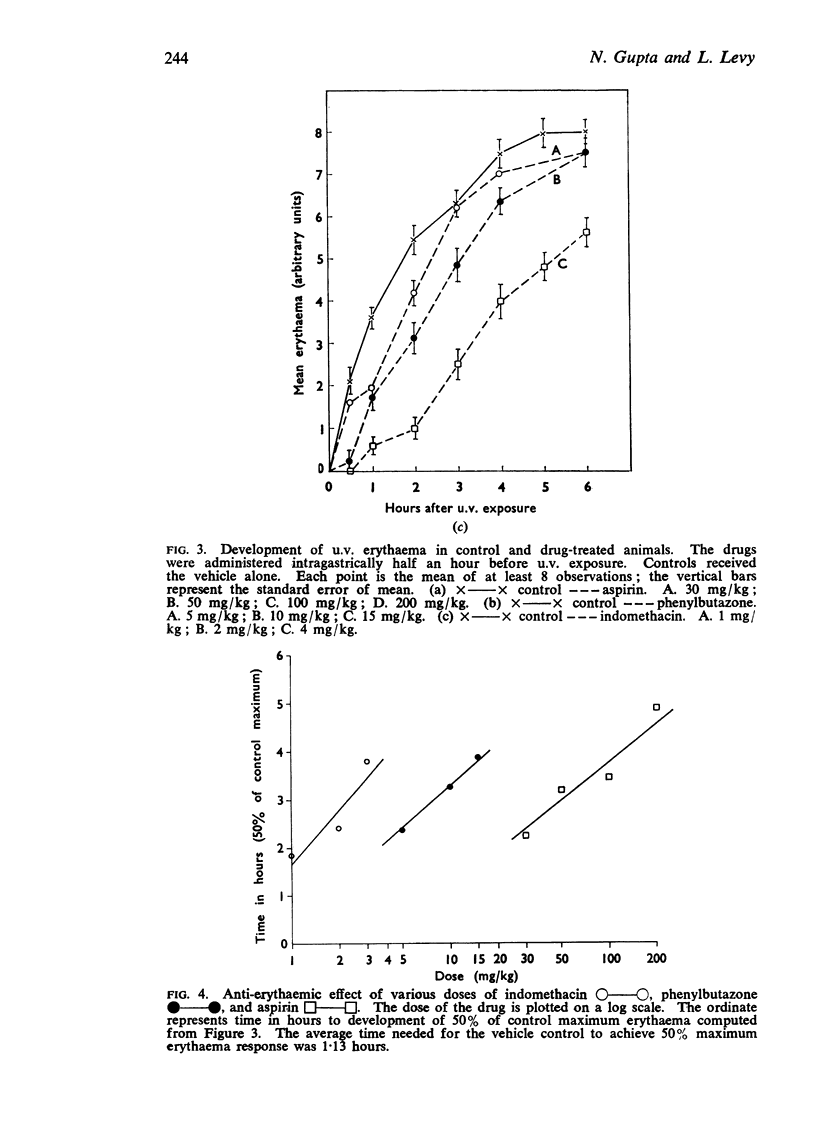

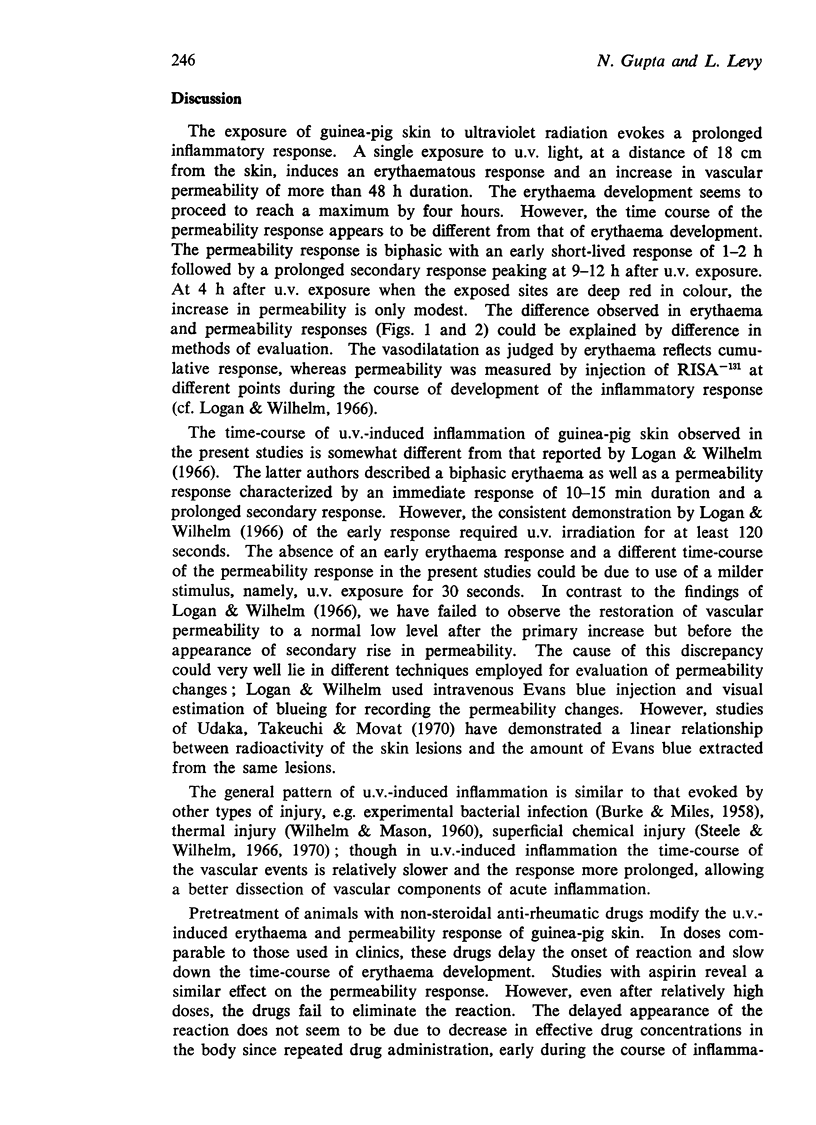
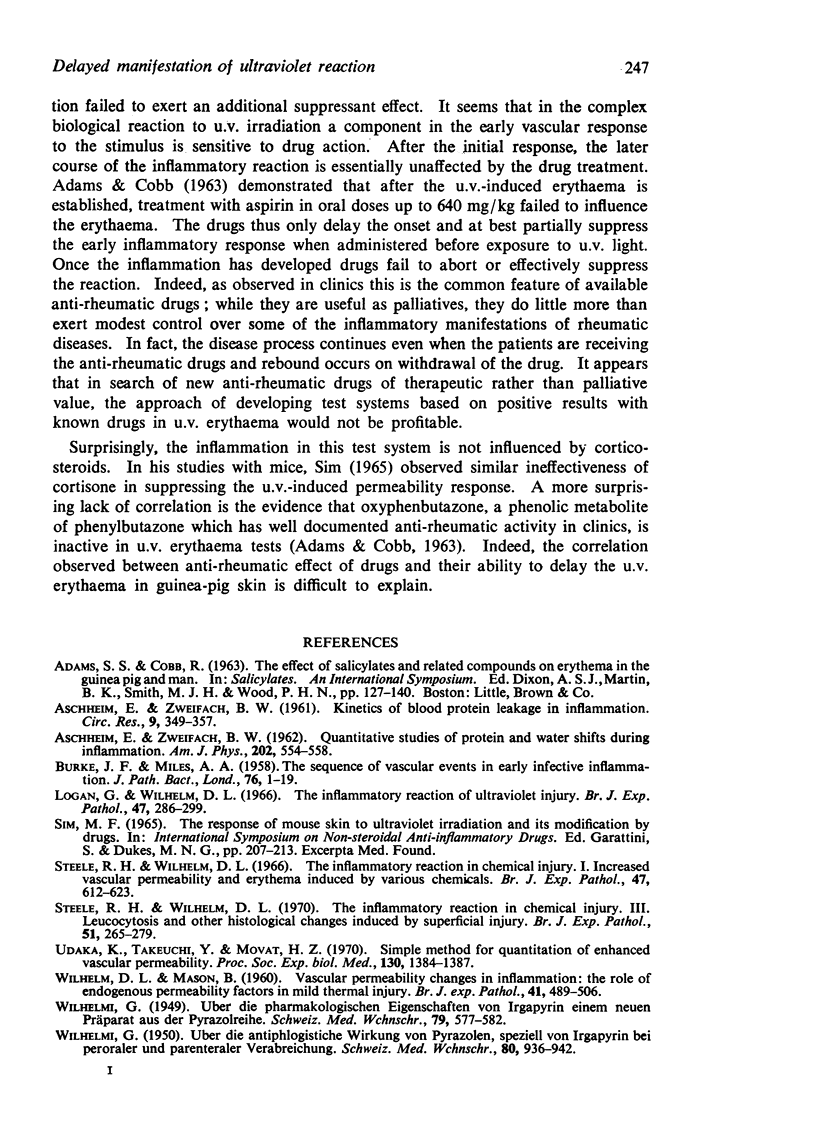
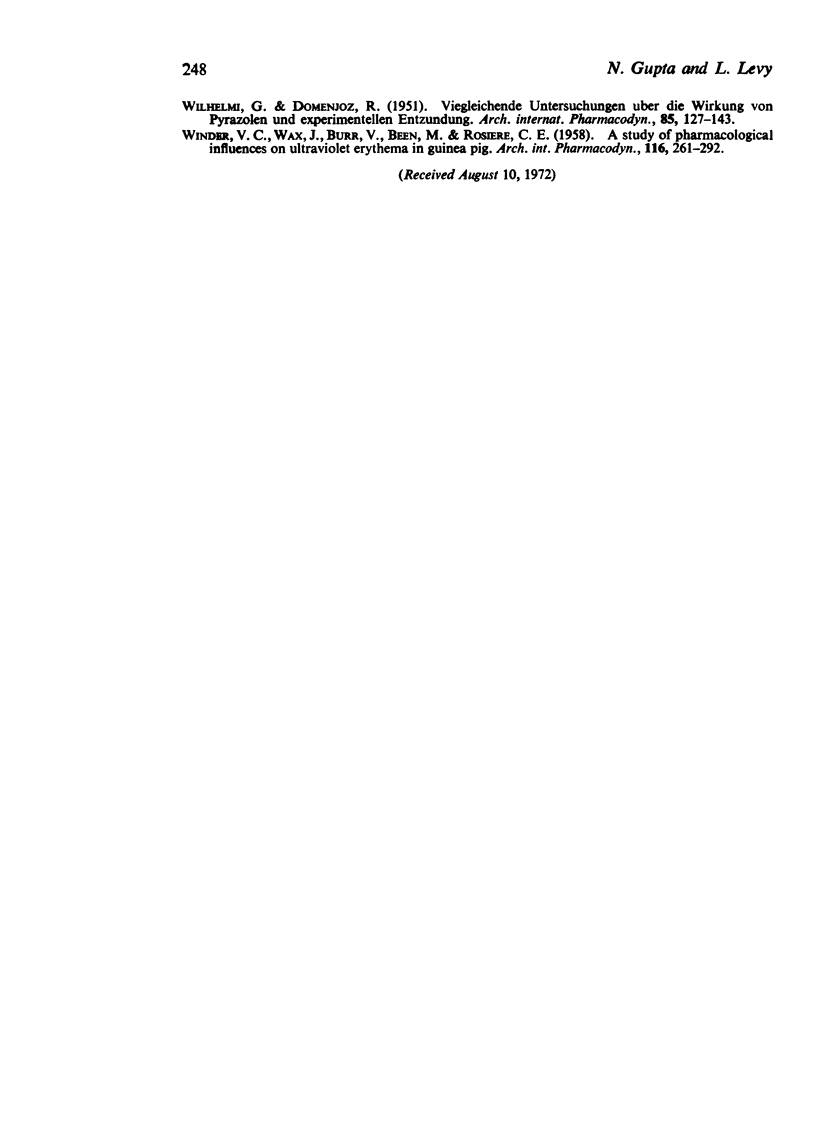
Selected References
These references are in PubMed. This may not be the complete list of references from this article.
- ASCHHEIM E., ZWEIFACH B. W. Kinetics of blood protein leakage in inflammation. Circ Res. 1961 Mar;9:349–357. doi: 10.1161/01.res.9.2.349. [DOI] [PubMed] [Google Scholar]
- ASCHHEIM E., ZWEIFACH B. W. Quantitative studies of protein and water shifts during inflammation. Am J Physiol. 1962 Mar;202:554–558. doi: 10.1152/ajplegacy.1962.202.3.554. [DOI] [PubMed] [Google Scholar]
- BURKE J. F., MILES A. A. The sequence of vascular events in early infective inflammation. J Pathol Bacteriol. 1958 Jul;76(1):1–19. [PubMed] [Google Scholar]
- Steele R. H., Wilhelm D. L. The inflammatory reaction in chemical injury. 3. Leucocytosis and other histological changes induced by superficial injury. Br J Exp Pathol. 1970 Jun;51(3):265–279. [PMC free article] [PubMed] [Google Scholar]
- Steele R. H., Wilhelm D. L. The inflammatory reaction in chemical injury. I. Increased vascular permeability and erythema induced by various chemicals. Br J Exp Pathol. 1966 Dec;47(6):612–623. [PMC free article] [PubMed] [Google Scholar]
- Udaka K., Takeuchi Y., Movat H. Z. Simple method for quantitation of enhanced vascular permeability. Proc Soc Exp Biol Med. 1970 Apr;133(4):1384–1387. doi: 10.3181/00379727-133-34695. [DOI] [PubMed] [Google Scholar]
- WILHELM D. L., MASON B. Vascular permeability changes in inflammation: the role of endogenous permeability factors in mild thermal injury. Br J Exp Pathol. 1960 Oct;41:487–506. [PMC free article] [PubMed] [Google Scholar]
- WILHELMI G., DOMENJOZ R. Vergleichende Untersuchungen über die Wirkung von Pyrazolen und Antihistaminen bei verschiedenen Arten der Experimentellen Entzündung. Arch Int Pharmacodyn Ther. 1951 Jan;85(1-2):129–143. [PubMed] [Google Scholar]
- WILHELMI G. Uber die antiphlogistische Wirkung von Pyrazolen, speziell von Irgapyrin, bei peroraler und parenteraler Verabreichung. Schweiz Med Wochenschr. 1950 Sep 2;80(35):936–942. [PubMed] [Google Scholar]


